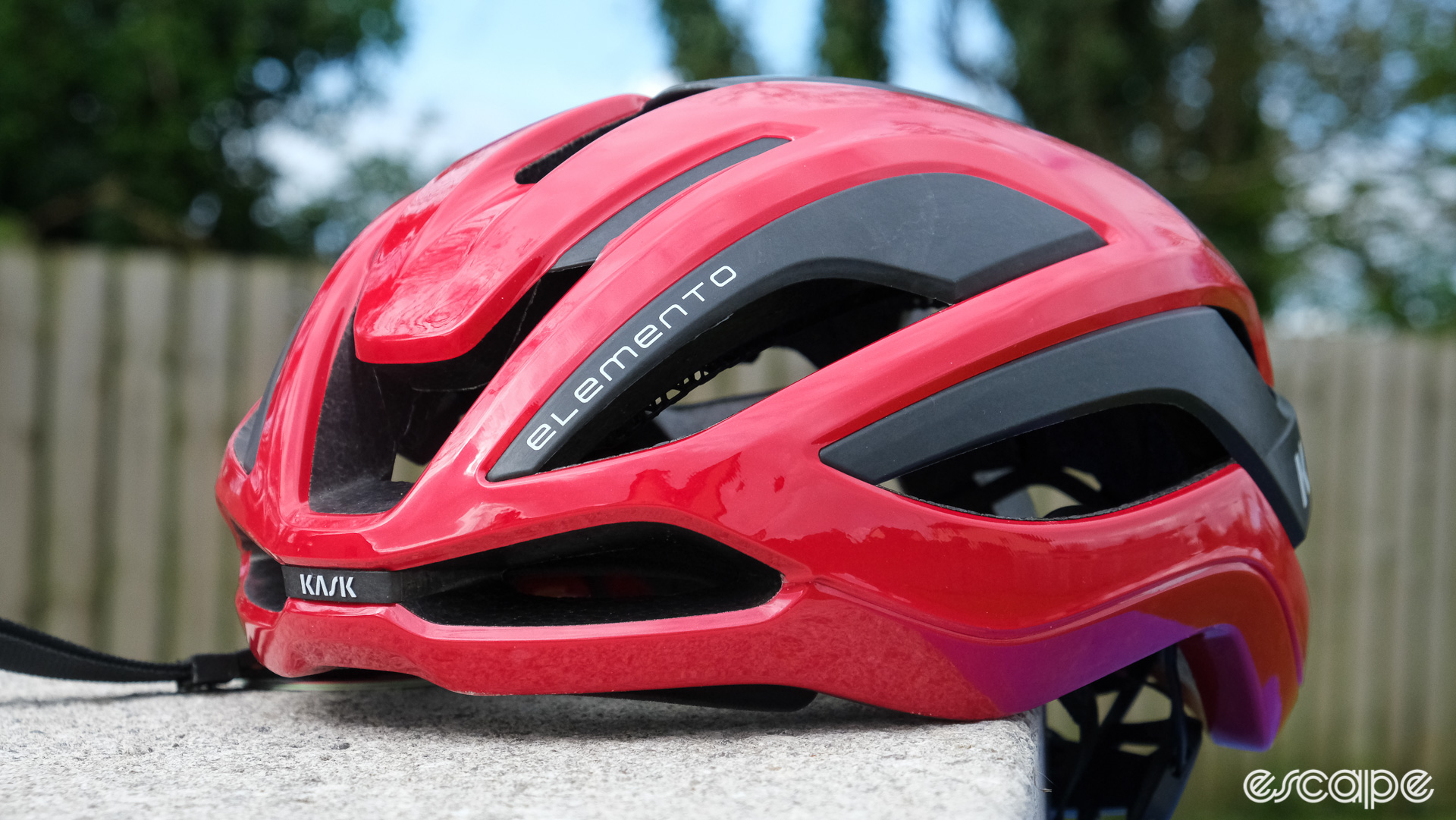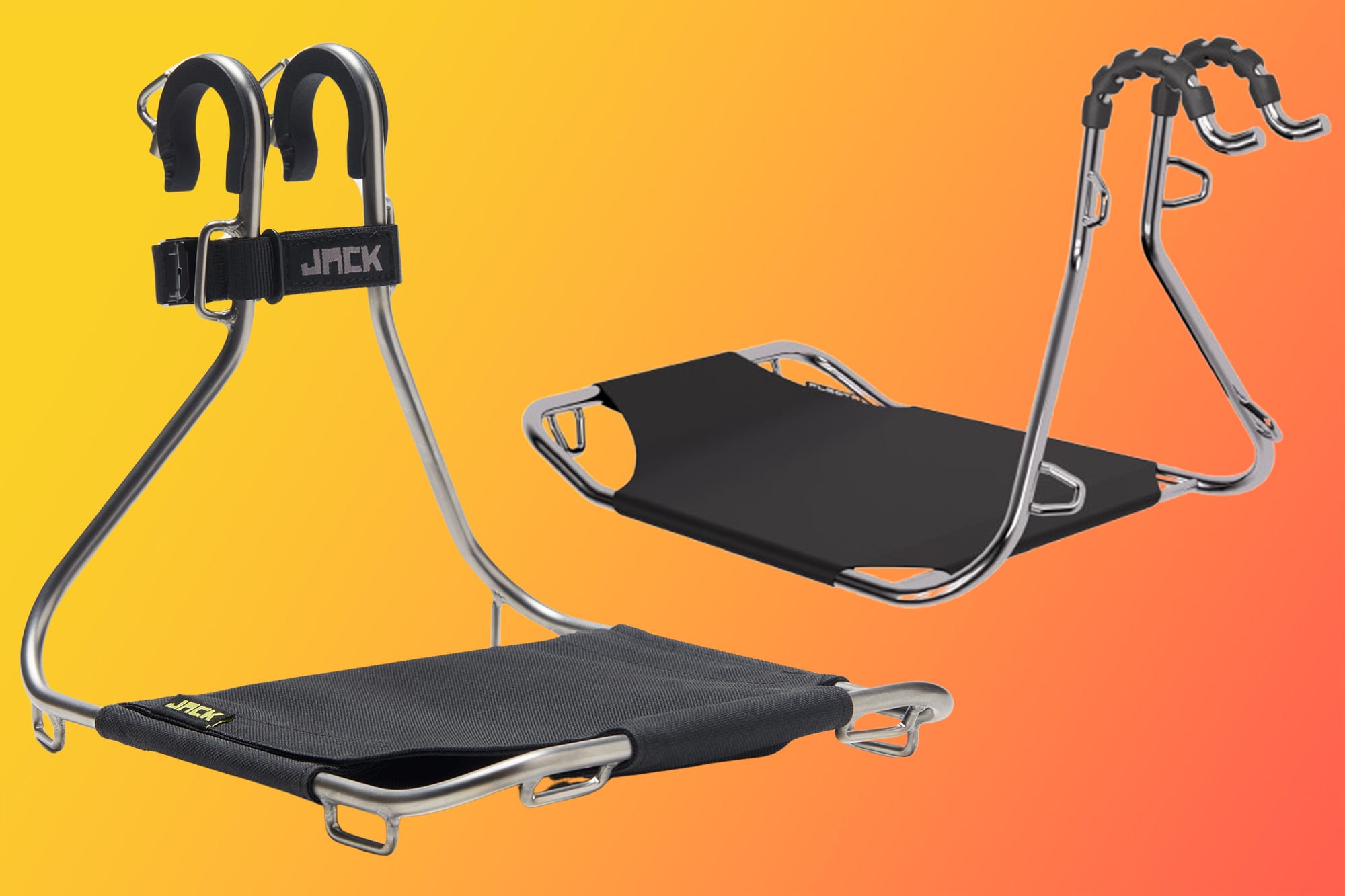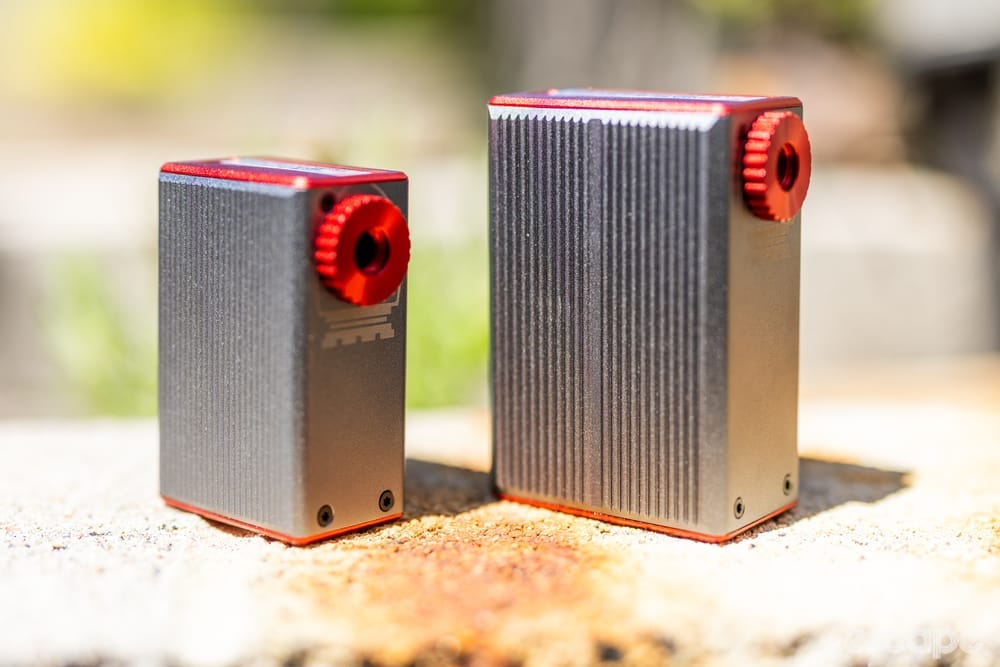For the longest time, it seems we've had only two choices when it comes to performance road helmets: ventilated or aero. There are, of course, aero-optimised ventilated helmets, and attempts to improve aerodynamics with smoother aero helmets, but the laws of physics seem to dictate there is always a trade-off to balance with aero or cooling.
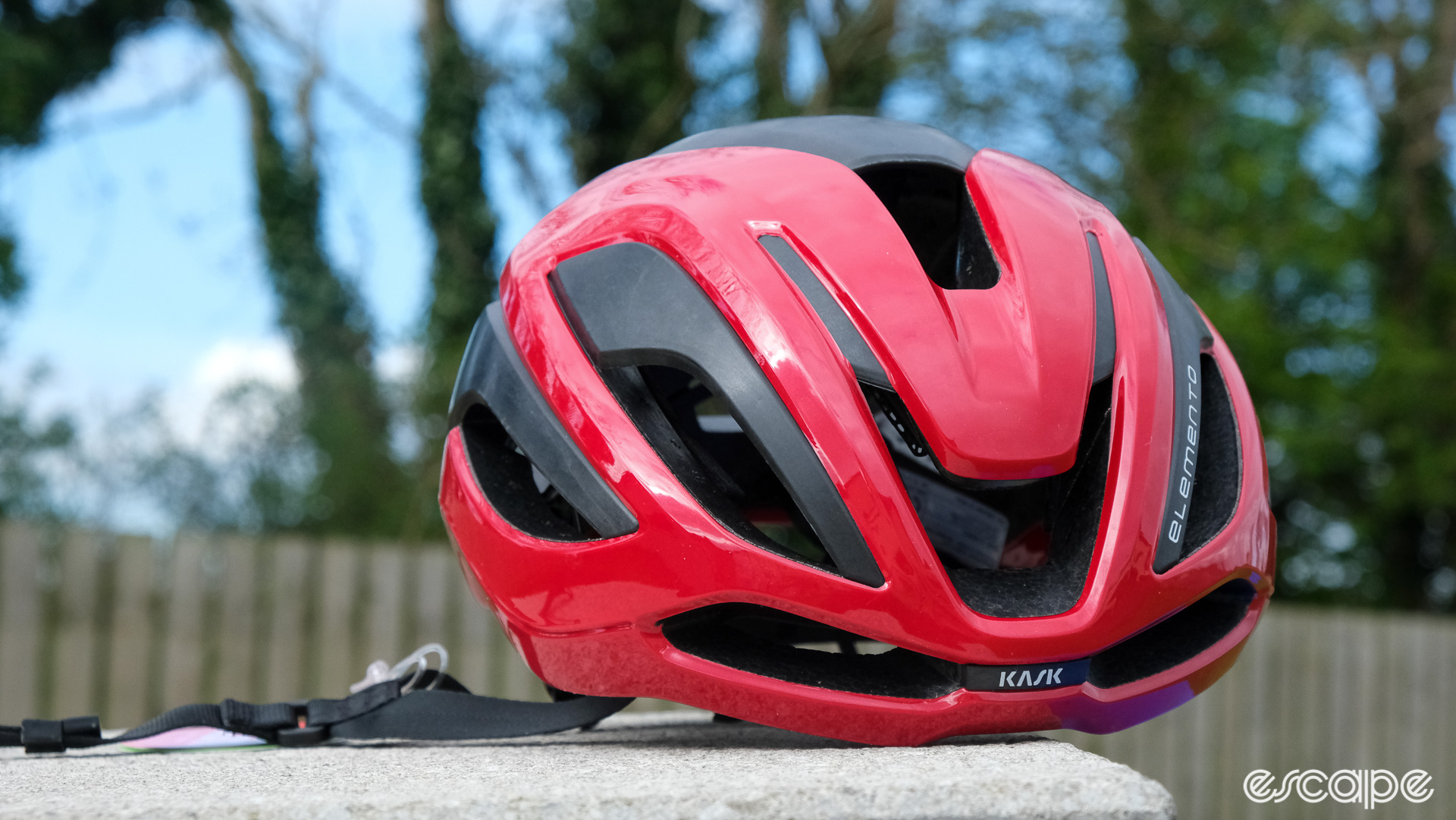

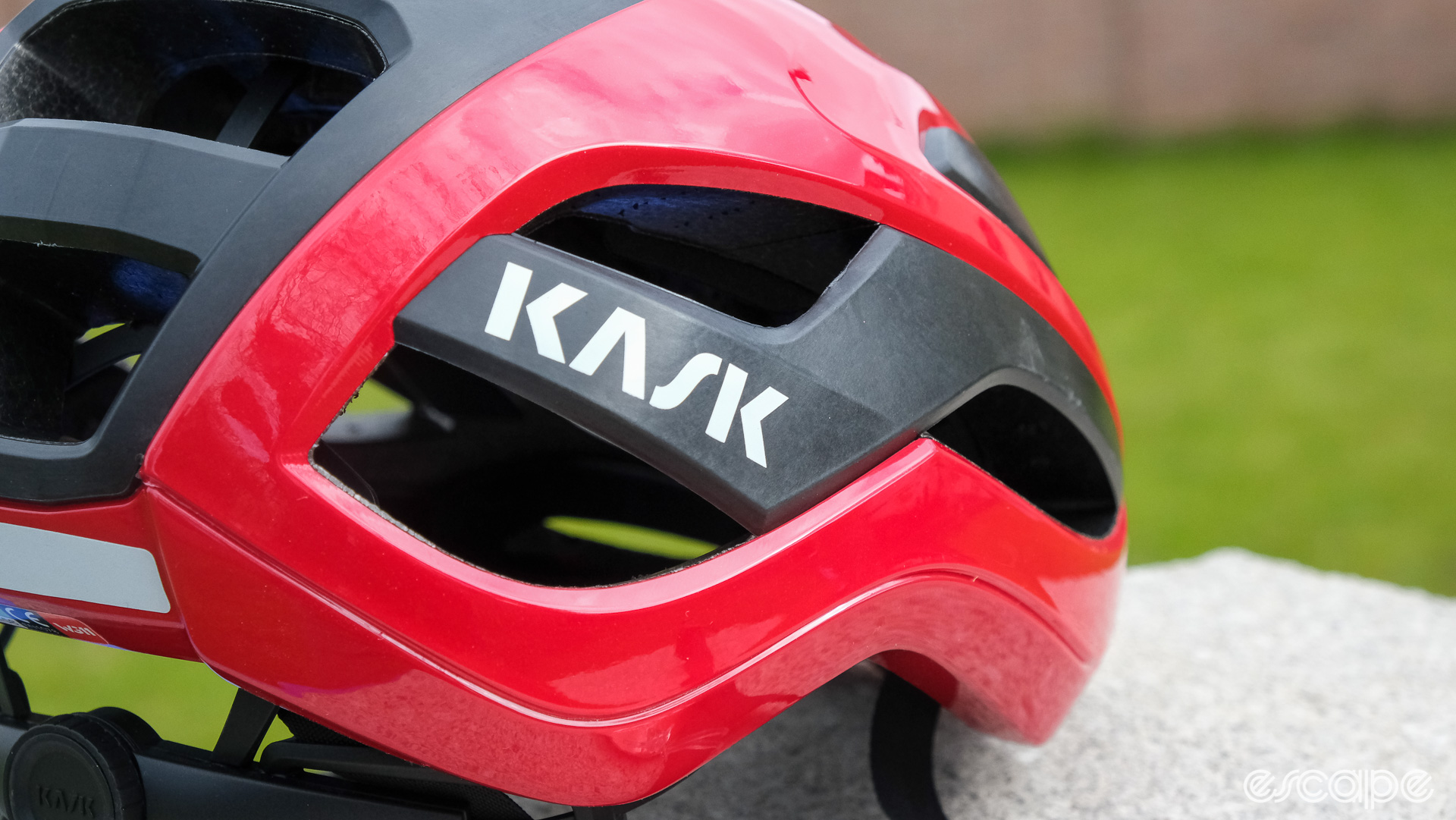
But Kask reckons they've bridged that seemingly impossible gap with its Elemento helmet, a helmet promising the "best possible ventilation" and thermal comfort combined with "super-aerodynamics." Oh, and it's said to offer the "very best safety," in a lightweight and comfortable package surpassing the usual safety standards. Those are some luft-y claims for a single helmet, and if true, might leave you wondering why you'd choose any other helmet, until you see the price tag. , so is it worth it? We've raced, trained, and tested in the Elemento for a year now to find out.
All that performance comes with an eye-watering, staggering, mind-boggling, insert-your-own-adjective £335 price tag, so why so costly?
Citations, please
There are a few answers to that question. There are, of course, the usual claims: the helmet was developed in partnership with the Ineos Grenadiers, and the aero / light / safe performance claims listed above. But, most of all, that price is also directly attributed to some of the new technologies Kask has employed to achieve those lofty aerodynamic combined with thermo-control gain claims.
Citing multiple published researched papers* (listed below) looking into the effects of thermal comfort and aerodynamics, Kask concluded that, when it comes to performance, an athlete's thermal comfort is just as important as a helmet's weight and aerodynamics. Those studies indicated, as you might expect, that more vented helmets offer better evaporative and convective heat transfer, while smoother helmets offer better aerodynamics. Luckily, though, those same laws of physics jurisdiction are diminished inside the helmet, and it's here that Kask claims it's cracked the code.
One of those studies listed found "overall cooling efficiency of (a) closed helmet with prominent internal channels and outlets was better than the closed helmets with inlets and outlets depicting the influence of internal channels on heat transfer" and that "global heat transfer characteristics and zonal heat transfer characteristics differed significantly," with those differences "influenced by zone position with respect to incoming air flow and helmet design features." With that in mind, Kask claims it can now improve heat transfer while simultaneously tackling aerodynamic drag by utilising specific channels inside the helmet designed to better harness a reduced airflow for the same cooling end result.
It's one thing knowing bigger channels can aid with cooling, but the challenge is integrating more empty space inside the helmet without diminishing safety and impact performance. Key to the new helmet is what Kask is calling "Fluid Carbon 12" (FC12), a composite technopolymer adopted from the aerospace industry and used in the helmet's safety cage.
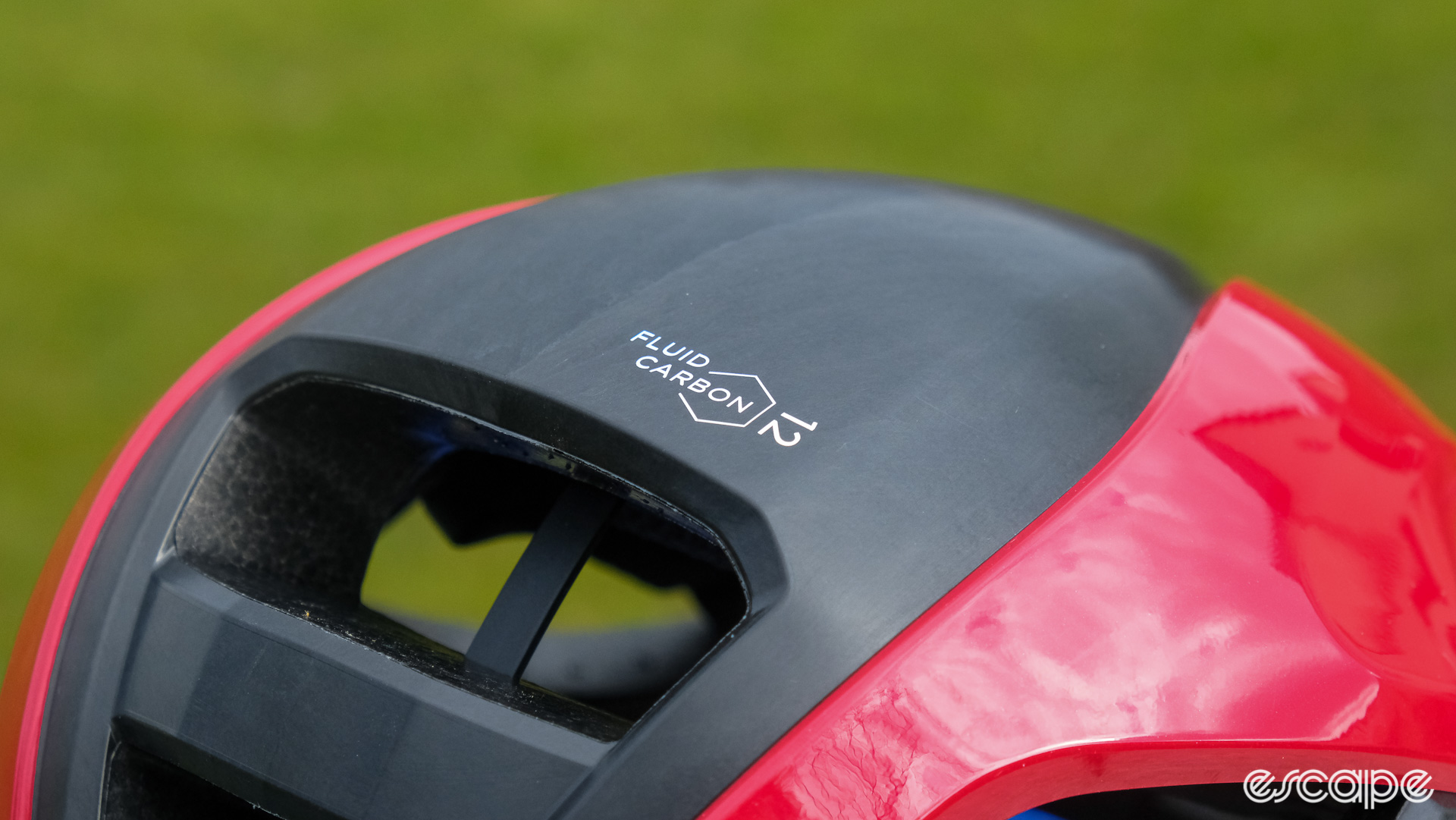
Kask claims FC12 is capable of absorbing more energy and better-distributing forces upon impact than traditional helmet materials. The upshot of that improved force control is that Kask designers now had the freedom to reduce the foam required inside the helmet, opening using deeper and wider internal channels Kask calls "Hyvent" to promote airflow while still passing impact tests.
To be clear, Kask hasn't found some miraculous way to defy the laws of physics. However, working on the theory that better airflow and ventilation inside and through the helmet can do the same job with less air intake, Kask designers were free to claw back some aerodynamic gains by reducing the size of the vents on the front of the helmet.

So, less foam and deeper channels ... can the much thinner FC12 really be as safe as traditional, thick, helmet foams and materials? We put this question to Kask, who claim Carbon Fluid 12 is not just as safe, its actually safer and tested the safest in comparative testing across "many reinforced thermoplastics and EPS+polycarbonate materials."
Independent test results
Kask claims that thanks to the FC 12, the Elemento demonstrates "an average of +10% improvement in absorbing energy from both linear and rotational impacts." And while we'd expect a helmet manufacturer to claim its helmets are safe, those claims are seemingly backed up by a five-star rating on Virginia Tech's independent helmet testing which rates helmets based on results from 24 impact tests in its laboratory.
I say "seemingly" because while the Elemento did score five stars in Virgina Tech's results, it doesn't quite prove that score is specifically due to Kask's claims that FC12 is better than other materials.
Virgina Tech's rating is comprised of two components: the STAR score and the number of stars. According to the Virginia Tech website, the "STAR (Summation of Tests for the Analysis of Risk) score is calculated based on a helmet's performance in a series of impact tests," – specifically, 24 drop tests at six different locations – and "is based on two fundamental concepts: 1) tests are weighted based on how often people experience similar impacts and 2) helmets that lower linear and rotational head acceleration reduce injury risk." Long story short: lower STAR scores are better.
Those STAR scores are then assigned a number of stars between one and five as a quick reference guide to categorise impact performance: more stars mean better (lower) STAR scores. As such, the Elemento's five-star rating means it has achieved a STAR score within the highest bracket (under 14 points), but its actual STAR score of 11.90 sees it rank 77th of the 233 total helmets Virginia Tech has tested and 77th out of 139 with a five-star rating. All that is to say, FC12 and more specifically the Elemento in general clearly does its job well, but as helmet makers tweak their technology to get better, the five-star group is a crowded field indeed and the Elemento does not lead it. (It's still, by those ratings, a very good helmet.)
Rankings aside, the Elemento is still promises a high performance helmet thanks in a large part to the inclusion of FC12. So why haven't we seen it used in helmets before now? Again, price is probably the main reason, but, in fact, Kask isn't the first to use a composite technopolymer in a helmet. The technology is already used in winter sports like alpine skiing and other sports with the potential for extreme weather conditions, but the Elemento represents the first time Kask is aware of the technology utilised in cycling.
There's more
The Elemento is no one-trick-pony, though, and seemingly it's not just aerospace composite technopolymers driving the price up. Kask has also turned to 3D printing to hit the Elemento's performance goals. The Elemento is treated to a new 3D-printed honeycomb-like isotropic elastomer material Kask is calling "Multipod."

In simpler terms, the internal padding is 3D printed and Kask says that is for two reasons: Firstly, the Multipod padding is said to make the helmet "better withstand linear and rotational impacts," while its isotropic properties "ensure it behaves consistently, no matter which direction the force is applied," according to Kask's own internal rotational impact testing (more on this later). Kask also claims the new padding design "can reduce the sheer stress between the head and the inside of the helmet."
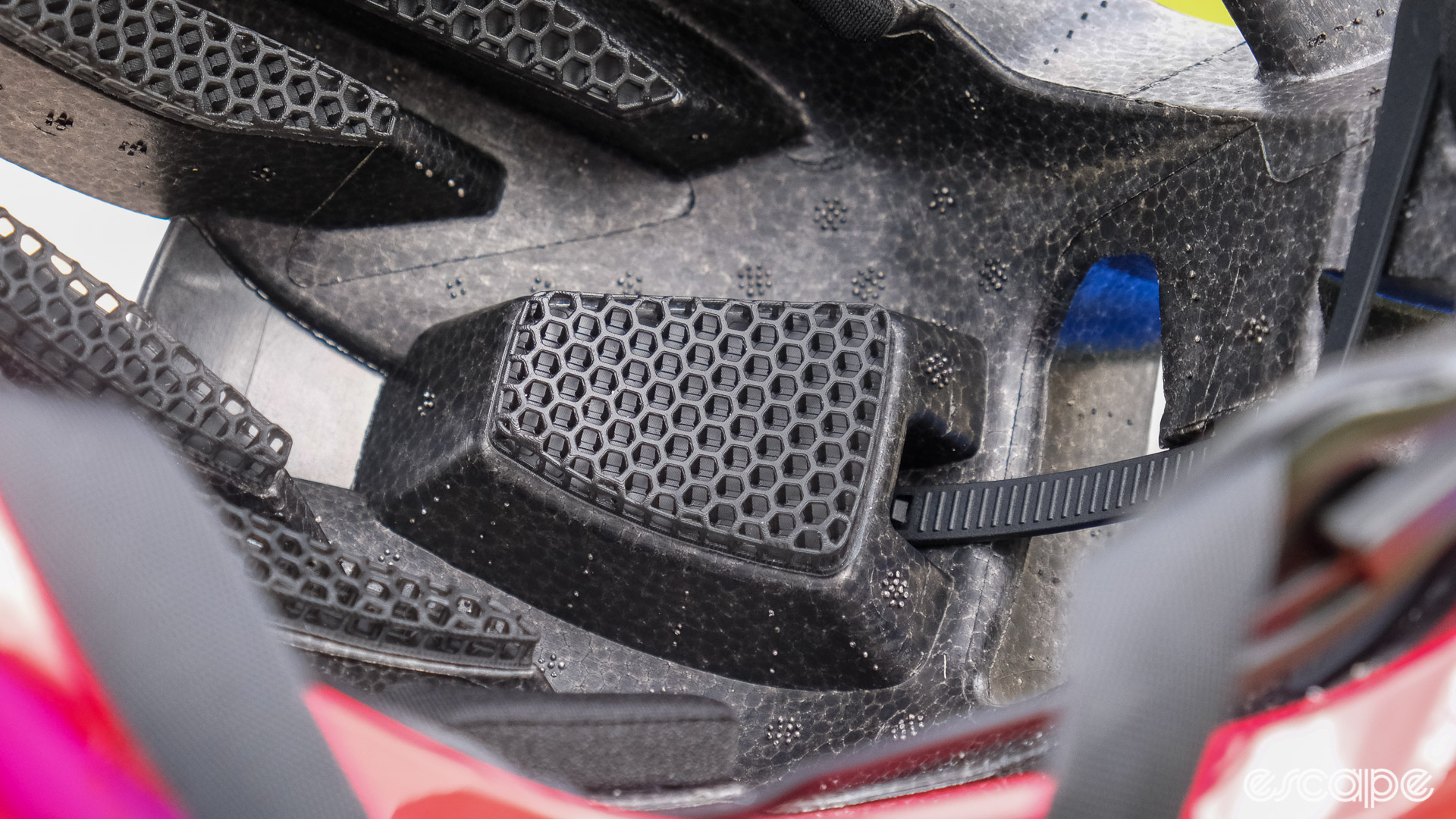
Of course, we never want to truly test the new padding's safety credentials, but, secondly, Kask claims there's also an everyday benefit with the hollow, honeycomb-like structure which is said to "greatly improve ventilation, thus increasing the Elemento's thermoregulation capabilities.
All told, what started off as a realisation that aerodynamics and thermo-regulation are both very important in a performance helmet resulted in what is arguably the most advanced, in terms of new materials, helmet currently available.
Furthermore, the Elemento also adopts a host of Kask-regular features. These include the Octofit+ retention system, which now features a larger rubber-coated rotary dial for easier use and a wider "vertical stabiliser" which Kask claims provides "greater stability, supporting a wider area across the nape of the neck and providing a customised fit for riders with long hair." There's also the Pro Chin Strap which is lighter than the leather strap that was once a Kask staple. And, finally, there's a merino wool padding just above the brow and reflective graphics on the rear.
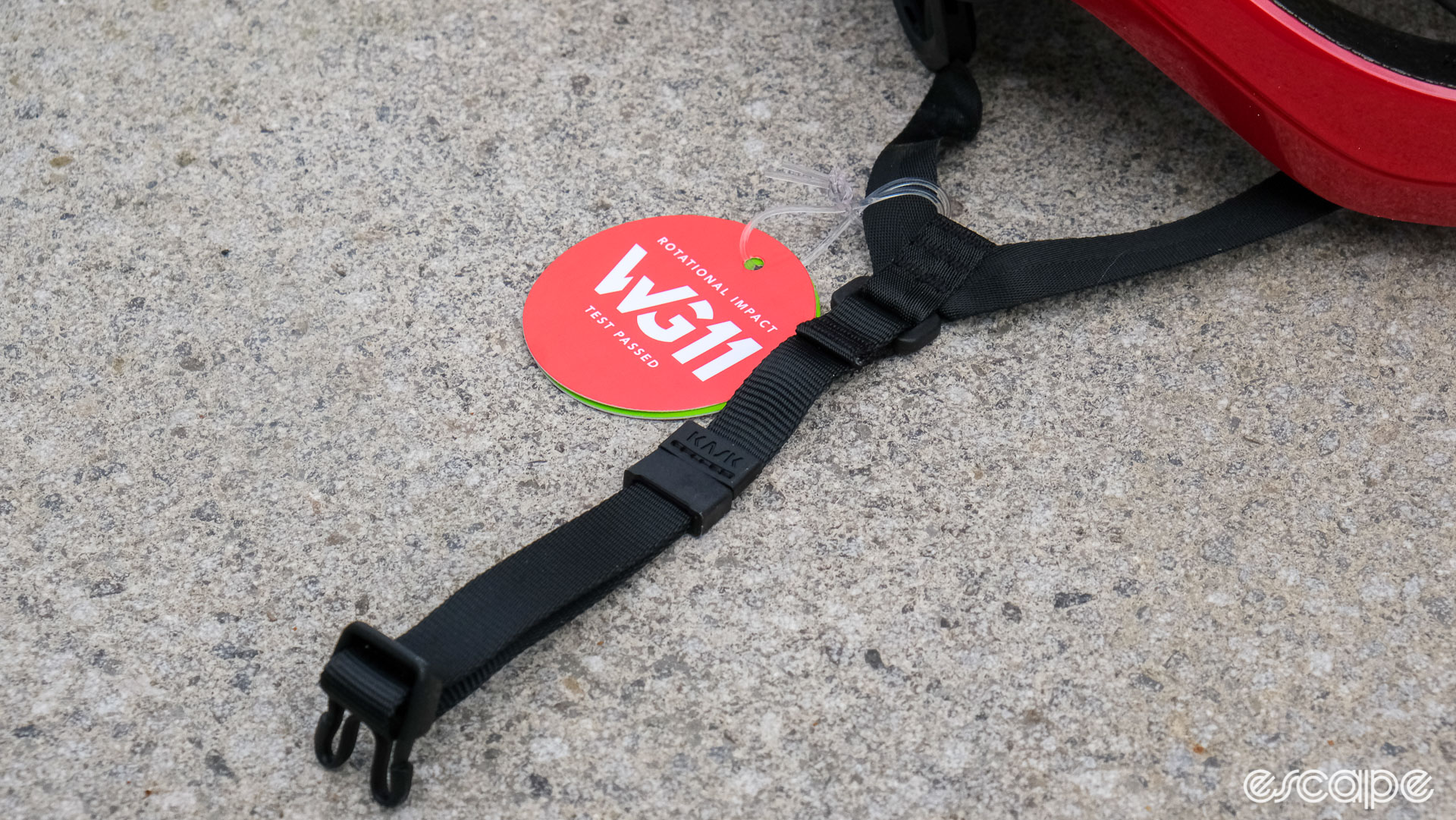

A confusing claim
Amongst all those regulars, there is, though, a relatively new addition to the list of Kask-regulars and that's a simple but controversial, arguably even misleading, WG11 sticker found on the rear of many of its helmets these days.
The sticker refers to Kask's "Rotational Impact WG11 Test," an "internal protocol adopted by Kask to identify an objective method, based on scientific sources, for measuring the performance of its helmets against rotational impacts." In other words, it's part of Kask's helmet testing and we like that brands are not only doing rotational impact testing but studying and researching it further.
The issue is with the naming, though: WG11 is also the name adopted by Working Group 11 (WG11), a standards body developing and implementing an industry-wide test protocol to assess rotational forces.
In short: WG11 is working to develop a rotational forces test for all helmets, and Kask is one member of that group. But Kask has also developed its own internal test for rotational forces it refers to as ... WG11. Confused? We were and both parties have doubled down on their positions with the WG11 standards body claiming Kask has caused confusion, a claim which Kask rejects.
At the heart of this debate is that conventional helmet safety testing standards do not account for rotational impacts, despite a growing amount of evidence and research indicating their importance and an update to the motorcycle helmet standards to include a rotational impact test. The WG11 group, convened by the co-founder of MIPS, Peter Haldin, is hoping to change that. The current cycling helmet standards focus on linear impacts, effectively assuming that reducing these will also reduce rotational forces.

Most cyclists are aware of the MIPS system added to some helmets. MIPS ("Multi-directional Impact Protection System.") is safety feature consisting of a low-friction layer added inside the helmet that allows the helmet to slide (or rotate) slightly on impact. MIPS claims its system helps to reduce rotational forces on the brain during angled impacts to the head, a claim seemingly backed up by the sheer number of MIPS-equipped helmets from various manufacturers at or near the top of Virgina Tech's ratings.
Kask doesn't use MIPS components in its helmets, though, and hence set about developing its own rotational impact protection system, which seemingly also works given this helmet's five-star rating with the same Virgina Tech testing. Competition here is hopefully good for us, the end users, as competition in this space will hopefully drive all involved to continually improve helmet safety. Less commendable is choosing a name, which, despite Kask's claims to the contrary, undoubtedly causes confusion for the end user.
All in, the measured weight of our size medium helmet was 279 grams, which at almost 20 grams more than Kask's 260 grams claimed weight. That said, that measured weight puts the Elemento only ever so slightly above other aero focused helmets I had on hand. The Specialzied Evade iii weighed 275 grams, while the Giro Eclipse Spherical MIPS was around the same bracket at 272 grams. The Elemento is also heavier than its Protone predecessor. Kask says this is due to the increased density of the Multipod padding versus a traditional liner and explained this slight weight penalty was a compromise it was willing to accept given what it sees as a significant improvement in safety.
What about it then?
The Elemento is jam-packed with modern technology and design guided by scientific research and CFD analysis, plus it's a pretty good-looking helmet. But setting all that aside, its the Elemento's almost fit-and-forget level of comfort that I like most. We'll get to the aero and the ventilation in a bit, but the main reason I keep reaching for the Elemento is just how effortlessly comfortable it is.
Time and time again I find myself fiddling with Y-splitters, retention systems, straps, or buckles trying to get a helmet dialed into my head (58 cm, sort of oval, if you are wondering), a tilt here and adjustment there, never quite getting it right. But with the Elemento it is the complete opposite.
I put it on my head and it's just right! First time, every time! I adjusted the strap tightness on first use, and it hasn't moved since. I open and close the retention system each time I put the helmet on or take it off , as you'd expect, but even that is easy. There actually is no adjustment on Kask's Y-splitter, but somehow it fits me just right. The Multipod padding is another bonus: comfortable, breathable, and snug.
It's not entirely perfect, though: the chunky Merino wool pad at the front, right above the brow, is a big miss in my book. Merino wool is known for it's breathability and sweat-wicking properties, but it's also highly absorbent. Used in base layers it can provide warmth and wick sweat away from the skin out to the next clothing layer to be evaporated away.
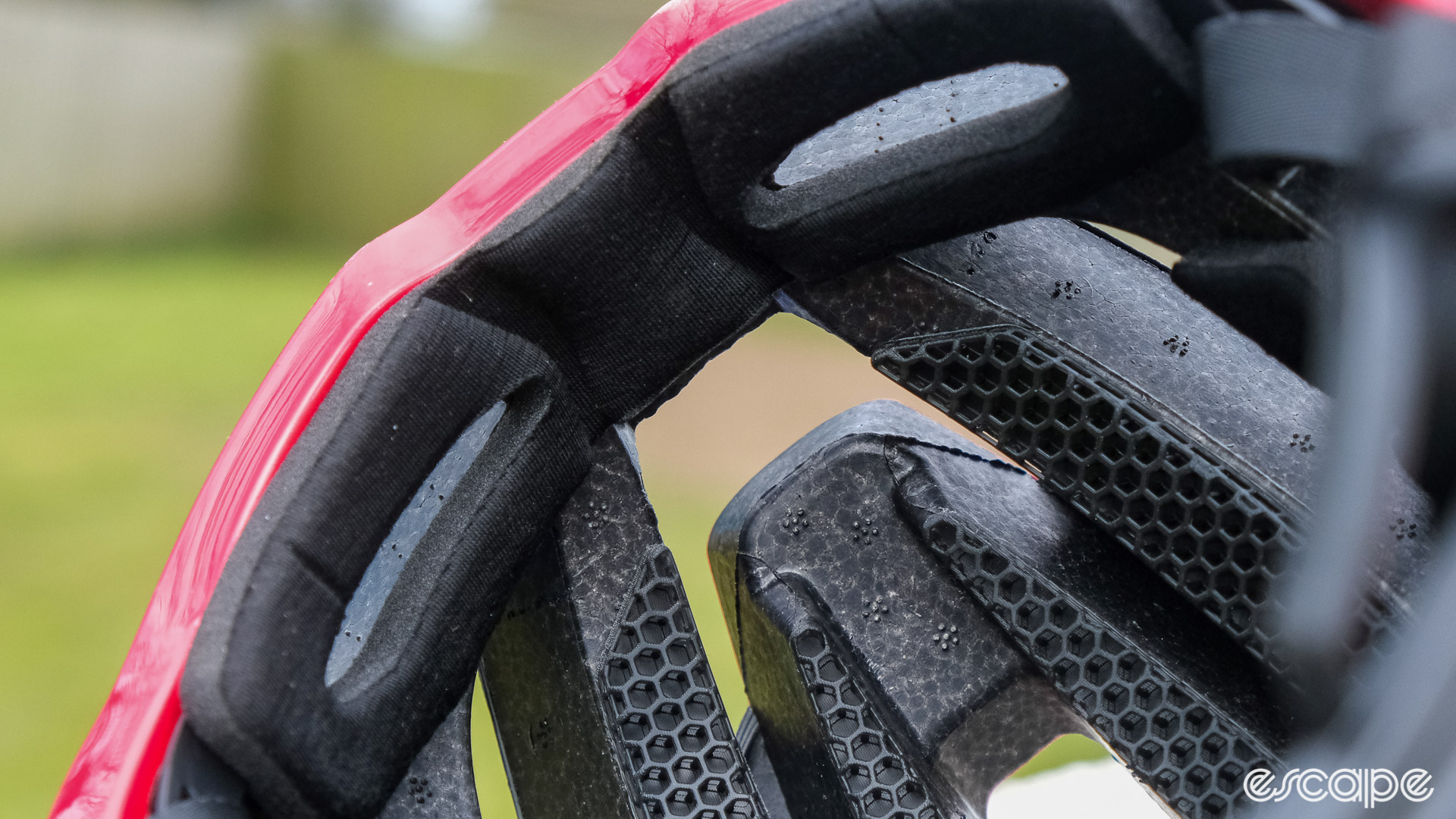
The problem with using such a large chunk of merino for a brow pad on a helmet like Kask has, is that the wool has nowhere for the sweat to go. Sweat absorbed from the forehead isn't transported onto the next layer a la a base layer because the next layer is the solid brow of the helmet. As such, the pad is quickly overwhelmed at which point there is nowhere for the sweat to go but down your face like a stream of water from a tightly rung sponge.
Even modest efforts had the Elemento dumping sweat into my glasses and down my face, which is not something I've noticed with other helmets, even less vented options, on anything but the warmest of days. The constant trickle of sweat down the face was so frustrating during sub-threshold efforts on climbs that I do now avoid the helmet for anything other than a cool day with no efforts despite its easy comfort in every other aspect.
Speaking with other tech writers during an unrelated press trip shortly after the Elemento launch, they all reported that same issue with the pad. They also reported an issue with the lack of sunglasses housing on the front of the helmet. That's not so much an issue for me, as I always stow sunglasses on the backwards on the rear of my head when not using them as intended over my eyes, but it is an issue for some.
Forgetting about the sweat-inducing Merino pad for a second, though, the Elemento is the most comfortable and easily set up helmet in my locker right now. I can't quite figure out what Kask has got so right, perhaps my head is just the goldilocks for its helmets, but the Octofit+ retention system certainly plays a significant role. With its wide cage, large pads, and pretty rigid yet easily adjustable structure, it feels more like it's hugging your head rather than tightening.
The Multipod 3D-printed honeycomb-esque padding also deserves its fair share of credit. It may be a fancy solution, but it delivers on the promise of comfort and airflow. All told, in terms of comfort and fit, the Elemento is definitely my heart pick for helmet comfort these days.
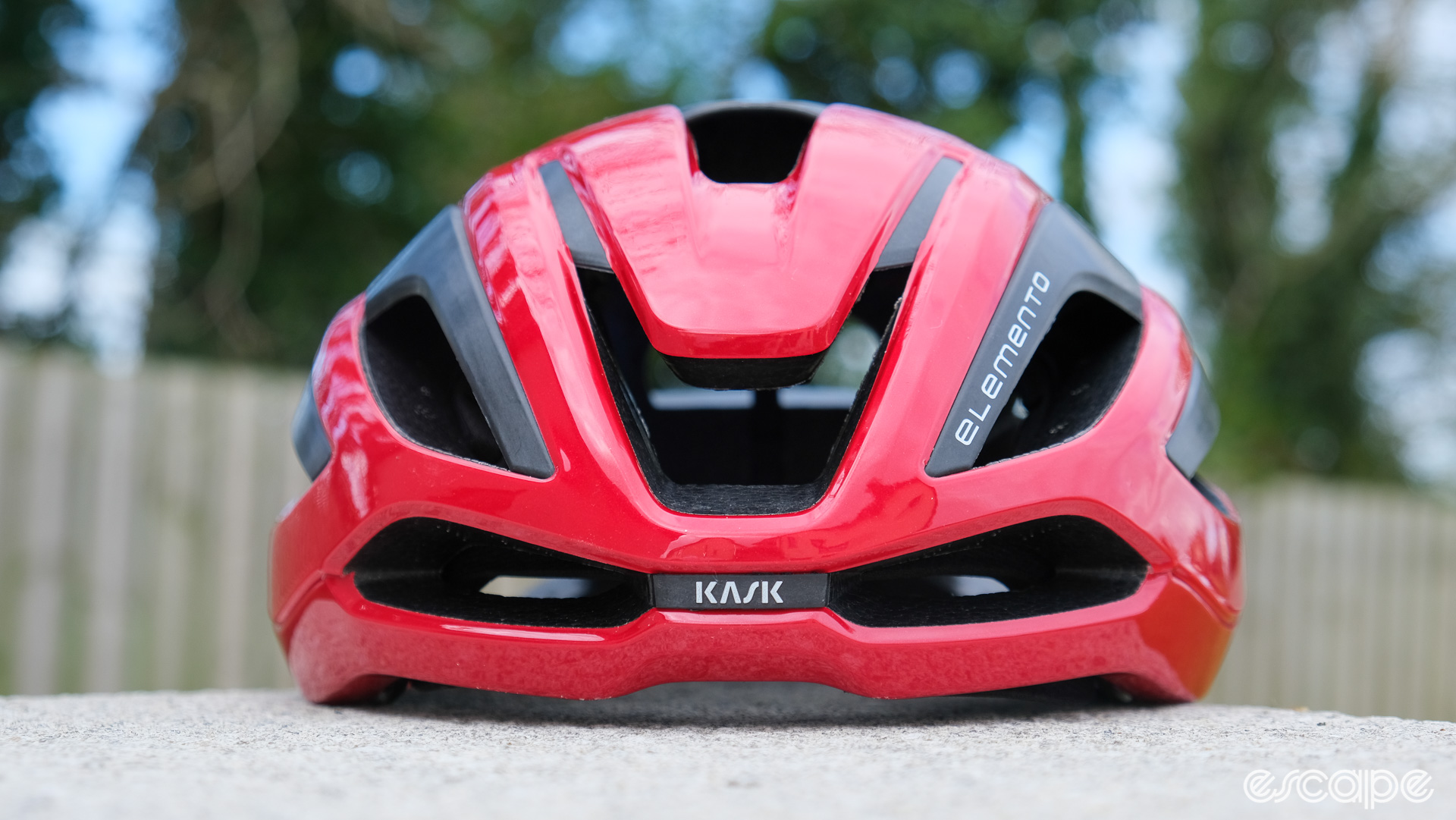
My head pick, though, is of course, still aerodynamics and Kask has made some lofty claims, giving the Elemento a 5/5 score on aero. Do those claims stack up? We've done some limited aero testing and while the results aren't conclusive they do offer hints. Our data suggests the Elemento is not as fast as some dedicated aero road helmets such as the S-Works Evade, Poc Procen Air, etc., but it did test faster than the pre-existing Kask Protone. More testing is required to determine how it compares to a broader range of helmets.
As for the FC12, thankfully I can't comment on its protective capabilities and I don't plan to test it. We did ask Kask if the technology might trickle down to other helmets in future, to which the Italian brand were tight-lipped but did say, "its innovative features bring significant benefits that can be exploited on future performance products." Hopefully future versions of Kask's popular time trial helmets could benefit from a bit more breathability inside.
Especially considering, as Kask has claimed with the Elemento, there is more to helmet performance than just aero. The flip side of that coin is thermo regulation. Unfortunately that element of the Elemento is not so simple to objectively test.
Subjectively, I found Kask's much hyped internal channels did seem to improve sensation of flow over my head and through the inside of the helmet compared to back to back testing with various other aero road helmets. Unfortunately, though, again, that Merino wool pad does the Elemento no favours, as the sweat pouring down your face quickly detracts from any cooling sensation in the channels. Again, on back to back testing I've noticed my entire head to be more drenched in sweat in other helmets but not notice any increase in sweat rate with other less-vented helmets, compared to the Elemento where most of my hair/head would show no signs of sweating but my face was drenched from the Merino pad downpour.
Then there is the price, the Elemento is on sale at a recommended retail price of €375, £335, US$400, and AU$570. Kask told me the price reflects the R&D investment and some of the materials featured in the Elemento are considerably more expensive than the ones used until now.
Still, there's no getting away from the fact that's a lot of money for a helmet, and with such a price tag comes an expectation of perfection. Perfection that the Elemento so nearly achieved, let down by that Merino pad. Hopefully Kask starts offering an alternative pad option.
Studies
Mukunthan, S.; Vleugels, J.; Huysmans, T.; Kuklane, K.; Mayor, T.S.; De Bruyne, G. "Thermal-Performance Evaluation of Bicycle Helmets for Convective and Evaporative Heat Loss at Low and Moderate Cycling Speeds", Appl. Sci. 2019, 9, 3672.
- Firoz Alam*, Harun Chowdhury, Zakaria Elmir, Andika Sayogo, James Love and Aleksandar Subic, "An Experimental Study of Thermal Comfort and Aerodynamic", 8th Conference of the International Sports Engineering Association (ISEA), 2010
- P. A. Brühwiler , M. Buyan , R. Huber , C. P. Bogerd , J. Sznitman , S. F. Graf & T. Rösgen (2006) "Heat transfer variations of bicycle helmets", Journal of Sports Sciences, 24:9, 999-1011, DOI: 10.1080/02640410500457877
- Paul A. Bruhwiler, Charline Ducas, Roman Huber, Phillip A. Bishop Bicycle (2004), "Bicycle helmet ventilation and comfort angle dependence", European Journal of Applied Physiology 92, 698-701. (PDF)
Did we do a good job with this story?

